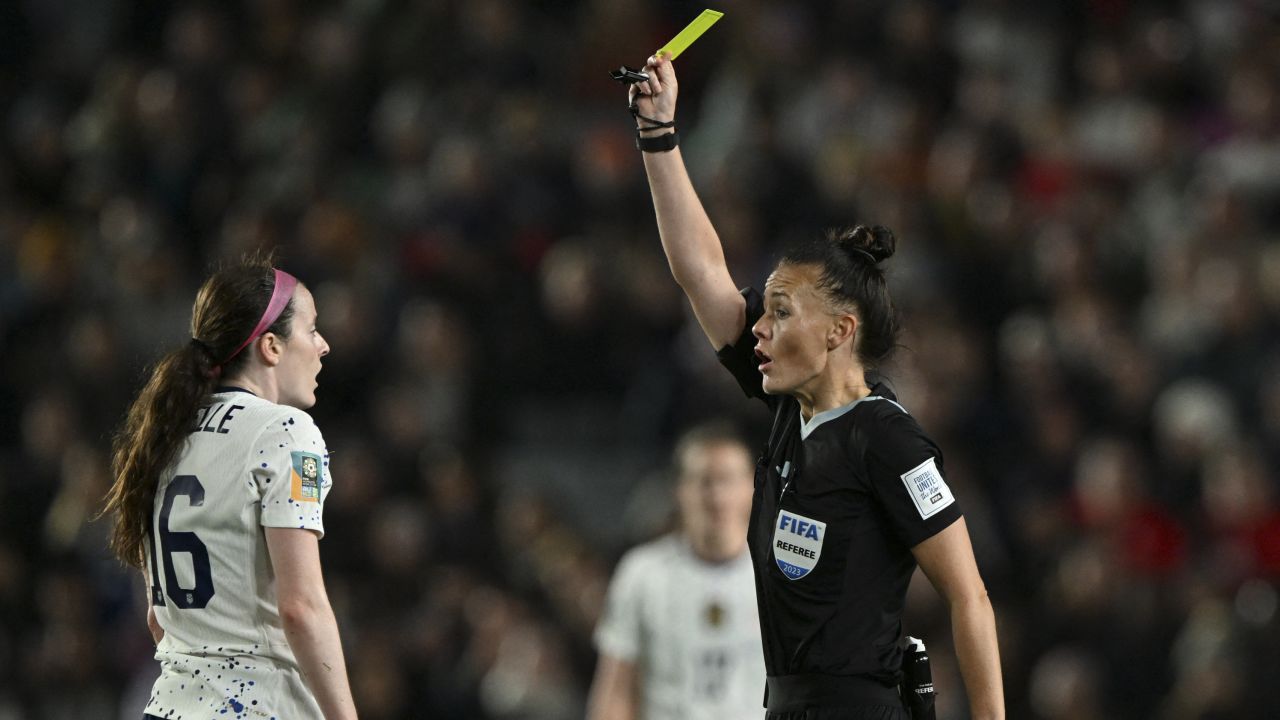Eleanor Klibanoff, Texas Tribune
July 31, 2023

Texas Attorney General Ken Paxton speaks during the Conservative Political Action Conference CPAC held at the Hilton Anatole on July 11, 2021, in Dallas, Texas.
- Brandon Bell/Getty Images North America/TNS
In November 2008, almost 70 million people turned out to vote for the nation’s first Black president and their hope for once-in-a-generation political change.
Barack Obama, a young, former community organizer, promised he’d help more people afford health care, stop the pollution of the planet, expand pathways to legal citizenship and help families dig their way out of the worst recession in decades.
With congressional majorities at his back, it seemed Republicans in D.C. would be hard-pressed to stop Obama's liberal juggernaut. But 1,500 miles away, a group of conservative attorneys were loading the canons and pointing them north.
Over the previous eight years, the Texas Office of the Attorney General had transformed from a Democrat-led bureaucratic workhorse into a Republican war machine, peppering the federal courts with conservative cases and friend-of-the-court filings. Now, Greg Abbott, a man elected by 2.5 million people to be the top lawyer for one of fifty states, stepped up to do what his fellow conservatives in Washington could not: stop, or at least slow, Obama’s agenda
During the Obama administration, Abbott's office, and especially its elite appellate unit, the Office of the Solicitor General, became a government in exile, a refuge for the Republican party’s brightest minds. Top-tier conservative attorneys came to Texas for the chance to gain courtroom experience, burnish their bonafides and strengthen their commitment to the cause.
They had plenty of opportunities. Under Abbott, Texas brought more than 30 lawsuits against the Obama administration in six years, including an average of one suit a month in 2010. Texas used the federal courts to try to stop the federal expansion of government subsidized health care; block protections for young people who entered the country illegally with their parents; guard businesses against environmental regulations intended to stave off climate change; and even extend the fishing season by two weeks.
Texas emerged as an almost co-equal party to the federal government, casting itself as the defender of state sovereignty, federalism and the U.S. Constitution, and quietly helping push the nation’s legal apparatus to the right.
Abbott defined his role quite simply: “I go into the office, I sue the federal government, and then I go home.”
In November 2008, almost 70 million people turned out to vote for the nation’s first Black president and their hope for once-in-a-generation political change.
Barack Obama, a young, former community organizer, promised he’d help more people afford health care, stop the pollution of the planet, expand pathways to legal citizenship and help families dig their way out of the worst recession in decades.
With congressional majorities at his back, it seemed Republicans in D.C. would be hard-pressed to stop Obama's liberal juggernaut. But 1,500 miles away, a group of conservative attorneys were loading the canons and pointing them north.
Over the previous eight years, the Texas Office of the Attorney General had transformed from a Democrat-led bureaucratic workhorse into a Republican war machine, peppering the federal courts with conservative cases and friend-of-the-court filings. Now, Greg Abbott, a man elected by 2.5 million people to be the top lawyer for one of fifty states, stepped up to do what his fellow conservatives in Washington could not: stop, or at least slow, Obama’s agenda
During the Obama administration, Abbott's office, and especially its elite appellate unit, the Office of the Solicitor General, became a government in exile, a refuge for the Republican party’s brightest minds. Top-tier conservative attorneys came to Texas for the chance to gain courtroom experience, burnish their bonafides and strengthen their commitment to the cause.
They had plenty of opportunities. Under Abbott, Texas brought more than 30 lawsuits against the Obama administration in six years, including an average of one suit a month in 2010. Texas used the federal courts to try to stop the federal expansion of government subsidized health care; block protections for young people who entered the country illegally with their parents; guard businesses against environmental regulations intended to stave off climate change; and even extend the fishing season by two weeks.
Texas emerged as an almost co-equal party to the federal government, casting itself as the defender of state sovereignty, federalism and the U.S. Constitution, and quietly helping push the nation’s legal apparatus to the right.
Abbott defined his role quite simply: “I go into the office, I sue the federal government, and then I go home.”
Reformation takes root
Several forces aligned to allow Texas to punch above its constitutional weight during the Obama administration.
In the previous decade, state attorneys general had taken a more proactive stance in the federal courts, banding together to pursue consumer protection and environmental regulation cases. Many states, including Texas, built solicitor general offices to improve their performance before appellate courts, and even bring cases to the U.S. Supreme Court.
This accelerated after a 2007 U.S. Supreme Court decision, Massachusetts v. EPA, granted states “special solicitude” to bring lawsuits against the federal government, effectively lowering the bar for states to get into court. The ruling’s true meaning has been hotly debated since, but Texas took it as pre-clearance to file more, and more ambitious, cases.
"The AG’s have really latched onto that,” said Paul Nolette, a Marquette University political scientist. “They’ve really expanded their ability to be, in some ways, unlike any other plaintiff. It’s just a lot easier to get into court for them.”
Other conservative states got in on the action, but Texas led the way, throwing its considerable resources into assembling multi-state lawsuits challenging anything the Obama administration put forth.
“Texas is the undisputed champion amongst conservative state litigators,” Nolette said. “Just in terms of sheer quantity of single-state cases and leading multi-state cases against Democratic administrations.”
Texas also started asking judges to issue nationwide injunctions, until then a rarely used tool that allows federal judges to extend their rulings to the whole country.
When Obama tried to protect undocumented parents of lawful citizens from deportation, Texas gathered a coalition of states to challenge the executive action. A federal judge in Brownsville determined only Texas had standing to sue — but agreed to issue a temporary injunction covering the whole country, effectively allowing one state’s objections to dictate policy for the nation.
“It was a new strategy, where one judge, in one random part of the state, all of a sudden has the power to basically bring entire federal programs to a halt,” said Stephen Vladeck, a law professor at the University of Texas at Austin. “The state of Texas was one of the first litigants to repeatedly push for this kind of relief.”
As the state’s legal tactics evolved, so did the intellectual underpinnings of their arguments. These cases weren’t about liberal or conservative politics, the argument went, but about returning to the original separation of powers laid out in the U.S. Constitution.
Obama was overstepping his executive authority, Texas argued, sidelining Congress and, most crucially, squashing state’s rights.
“If I have to, I will use one challenge after another to dismantle governmental operations that I consider violations of the Constitution,” Abbott told Texas Monthly in 2013. “I’ve had one overarching goal, and that is a strict interpretation and application of the laws and the Constitution.”
Abbott did not respond to a request for comment for this story.
Texas’ most common target was the Environmental Protection Agency and Obama's efforts to address climate change, which were viewed as a threat to the oil, gas and chemical industries that fuel the Texas economy.
In 2010, Texas sued to overturn an agency finding that greenhouse gasses were impacting public health, and then sued to block the rules intended to rein in those emissions, claiming the agency had not followed proper rulemaking procedure. When the EPA said Texas’ environmental protection plans didn’t meet federal standards, Texas sued, and when the EPA took over Texas’ programs, Texas sued.
/https://static.texastribune.org/media/files/f07da35e1303d113d9f1061defafb26f/Obama%202010%20BD%20TT%2001.jpg)
Then-President Barack Obama speaks to a crowd of 3,000 students and faculty at the University of Texas at Austin on Aug. 8, 2010.
Credit: Bob Daemmrich for The Texas Tribune
Texas pushed this legal strategy on cases big — the Affordable Care Act — and small. When a federal judge in Texas ordered the National Marine Fisheries Service to restore two weeks of red snapper season, Abbott touted the victory as a “big win for Texas fishermen, jobs along the Gulf Coast and — most importantly — the rule of law.”
“Texans will not stand by idly while federal bureaucrats attempt to govern by illegal emergency rule – we will fight back and we will prevail,” he wrote in a press release.
While it was easier than ever to get into the courtroom, many federal judges had not yet traveled as far down the ideological road as Texas. Abbott’s defeats seemed to fuel his fervor as much as the wins.
“It’s about principles — fundamental principles enshrined in the Constitution,” Abbott wrote in an op-ed defending the cost of his lawsuits. “Defending the constitutional principles that have made the United States truly exceptional: That’s priceless.”
And when he lost at the district court level, Abbott had a crack team on hand in the Office of Solicitor General to handle the appeals.
True believers
Ted Cruz, who would ride Texas’ Obama outrage to a U.S. Senate seat in 2012, laid the foundation for the solicitor general’s office as a legal champion of conservative causes. His successors continued to build the edifice, returning to the circuit courts and the Supreme Court again and again to defend Abbott’s multiplying forays into federal territory.
James Ho, regarded at the time as “one of the best appellate lawyers in the state (and the country for that matter),” became solicitor general in April 2008, a little less than a decade after the office was created.
“By the time I inherited the office, the Texas Solicitor General’s office had cemented itself as the state’s appellate chief, with the same power that the U.S. Solicitor General has at the federal level,” Ho told the Texas Tribune. “No one in the AG’s office could either pursue or defend an appeal without the express advance permission of the SG’s office.”
Ho, who was later appointed to the 5th U.S. Circuit Court of Appeals under former President Donald Trump, helped turn the office into a legal heavyweight. In 2009, the U.S. Supreme Court asked Texas to submit a brief in a lawsuit the state wasn’t directly involved in, a sign of respect usually reserved for the U.S. Solicitor General’s office.
“There was a saying when I was there, which is, ‘when in doubt, do what the U.S. Solicitor General’s office does,’” Ho said. “That tells you the spirit of the office, we wanted to be the premiere appellate speciality office for the state of Texas, to make sure our client’s legal rights were well-represented.”
Many of Texas’ high-profile challenges didn’t make it to the appeals stage until after Ho returned to private practice in December 2010. He left the office in the hands of a law school classmate with a similarly purebred conservative resume.
Like Ho, Jonathan Mitchell, and his deputy, Andrew Oldham, each clerked for conservative Supreme Court justices — Antonin Scalia for Mitchell, Samuel Alito for Oldham. All three men worked under Republican presidents at the elite coterie that is the Department of Justice’s Office of Legal Counsel.
From there, Mitchell had gone into academia, teaching law at George Mason University Law School, later renamed for Scalia. Today, Mitchell is best known for designing the novel legal theory that allowed Texas to sidestep Roe v. Wade and ban abortions after about six weeks of pregnancy. The law, which has survived severallegalchallenges, is enforced entirely through private lawsuits.
“I thought it would be an opportunity to work on some interesting cases, and an opportunity to get Supreme Court arguments, which are really, really hard to get if you’re not a state solicitor general,” Mitchell told The Texas Tribune.
Mitchell noted that the office handled a wide range of cases, including defending the University of Texas at Austin’s affirmative action policy. But by the time he took over, Texas had made a name for itself as a conservative legal force, led by Abbott — “a true believer in federalism.”
“I don’t think it was just because it was Obama and Obama’s policies,” Mitchell said. “He really believed that things had gotten out of kilter between the federal government and the states, and he wanted to restore a balance that more closely resembled what the framers envisioned.”
/https://static.texastribune.org/media/files/897af19d3f5b726a51766d2c6693812f/Jonathan%20Mitchell%20SCOTX%20TT%2001.jpg)
Attorney Jonathan Mitchell speaks before the Texas Supreme Court on Oct. 28, 2021. Credit: Supreme Court of Texas YouTube channel
As his deputy, Mitchell hired Oldham, today a judge on the 5th U.S. Circuit Court of Appeals. In addition to clerking at the U.S. Supreme Court, Oldham was a “Sentelletubbie” — a former clerk of Judge David Sentelle on the D.C. Circuit Court of Appeals.
The D.C. Circuit is unique in that it mostly handles cases related to the federal agencies that regulate daily life, like the Environmental Protection Agency, the Food and Drug Administration and the Securities and Exchange Commission.
“It’s a place where, if you have ideas about the size, nature and scope of the administrative state … It's really an opportunity for those ideas to be tested,” said Enrique Armijo, a law professor at Wake Forest University who clerked at the same time as Oldham. “I myself got more sympathetic to the idea that there is a reason these agencies exist and there’s a reason Congress created them.”
But not everyone had the same takeaway. Working for Sentelle, a deeply conservative Reagan appointee, Oldham began to develop the anti-regulatory ideas he would eventually bring to bear on Texas.
Over the past century, as the world became more complicated and Congress more deadlocked, these executive branch agencies grew in number and power, and presidents of both parties increasingly turned to administrative regulation to enact aspects of their agendas.
But during the Obama administration, Texas appointed itself top administrative regulation cop, setting up roadblocks to prevent the EPA from tackling climate change, the Equal Employment Opportunity Commission from helping former felons get hired and the U.S. Department of Health and Human Services from requiring contraception be covered on health insurance plans.
In lawsuit after lawsuit, Texas argued the Obama administration hadn’t followed the correct rulemaking procedure, new regulations were “arbitrary and capricious,” or they didn’t fully take into account the economic impact on the states. Obama was violating the separation of powers enshrined in the Constitution, using these agencies to legislate without Congressional oversight, Texas claimed; anything Congress couldn’t handle should be left to the states.
The “alphabet soup of administrative agencies that dominate modern American life,” Oldham said at a 2016 Federalist Society event at the University of Chicago, is “fundamentally illegitimate.”
/https://static.texastribune.org/media/files/391bc9514739b091962e27fae7844050/Oldham_confirmation_AS_TT.jpg)
Andrew Oldham testifies at a confirmation hearing before the U.S. Senate Judiciary Committee on April 25, 2018.
Texas pushed this legal strategy on cases big — the Affordable Care Act — and small. When a federal judge in Texas ordered the National Marine Fisheries Service to restore two weeks of red snapper season, Abbott touted the victory as a “big win for Texas fishermen, jobs along the Gulf Coast and — most importantly — the rule of law.”
“Texans will not stand by idly while federal bureaucrats attempt to govern by illegal emergency rule – we will fight back and we will prevail,” he wrote in a press release.
While it was easier than ever to get into the courtroom, many federal judges had not yet traveled as far down the ideological road as Texas. Abbott’s defeats seemed to fuel his fervor as much as the wins.
“It’s about principles — fundamental principles enshrined in the Constitution,” Abbott wrote in an op-ed defending the cost of his lawsuits. “Defending the constitutional principles that have made the United States truly exceptional: That’s priceless.”
And when he lost at the district court level, Abbott had a crack team on hand in the Office of Solicitor General to handle the appeals.
True believers
Ted Cruz, who would ride Texas’ Obama outrage to a U.S. Senate seat in 2012, laid the foundation for the solicitor general’s office as a legal champion of conservative causes. His successors continued to build the edifice, returning to the circuit courts and the Supreme Court again and again to defend Abbott’s multiplying forays into federal territory.
James Ho, regarded at the time as “one of the best appellate lawyers in the state (and the country for that matter),” became solicitor general in April 2008, a little less than a decade after the office was created.
“By the time I inherited the office, the Texas Solicitor General’s office had cemented itself as the state’s appellate chief, with the same power that the U.S. Solicitor General has at the federal level,” Ho told the Texas Tribune. “No one in the AG’s office could either pursue or defend an appeal without the express advance permission of the SG’s office.”
Ho, who was later appointed to the 5th U.S. Circuit Court of Appeals under former President Donald Trump, helped turn the office into a legal heavyweight. In 2009, the U.S. Supreme Court asked Texas to submit a brief in a lawsuit the state wasn’t directly involved in, a sign of respect usually reserved for the U.S. Solicitor General’s office.
“There was a saying when I was there, which is, ‘when in doubt, do what the U.S. Solicitor General’s office does,’” Ho said. “That tells you the spirit of the office, we wanted to be the premiere appellate speciality office for the state of Texas, to make sure our client’s legal rights were well-represented.”
Many of Texas’ high-profile challenges didn’t make it to the appeals stage until after Ho returned to private practice in December 2010. He left the office in the hands of a law school classmate with a similarly purebred conservative resume.
Like Ho, Jonathan Mitchell, and his deputy, Andrew Oldham, each clerked for conservative Supreme Court justices — Antonin Scalia for Mitchell, Samuel Alito for Oldham. All three men worked under Republican presidents at the elite coterie that is the Department of Justice’s Office of Legal Counsel.
From there, Mitchell had gone into academia, teaching law at George Mason University Law School, later renamed for Scalia. Today, Mitchell is best known for designing the novel legal theory that allowed Texas to sidestep Roe v. Wade and ban abortions after about six weeks of pregnancy. The law, which has survived severallegalchallenges, is enforced entirely through private lawsuits.
“I thought it would be an opportunity to work on some interesting cases, and an opportunity to get Supreme Court arguments, which are really, really hard to get if you’re not a state solicitor general,” Mitchell told The Texas Tribune.
Mitchell noted that the office handled a wide range of cases, including defending the University of Texas at Austin’s affirmative action policy. But by the time he took over, Texas had made a name for itself as a conservative legal force, led by Abbott — “a true believer in federalism.”
“I don’t think it was just because it was Obama and Obama’s policies,” Mitchell said. “He really believed that things had gotten out of kilter between the federal government and the states, and he wanted to restore a balance that more closely resembled what the framers envisioned.”
/https://static.texastribune.org/media/files/897af19d3f5b726a51766d2c6693812f/Jonathan%20Mitchell%20SCOTX%20TT%2001.jpg)
Attorney Jonathan Mitchell speaks before the Texas Supreme Court on Oct. 28, 2021. Credit: Supreme Court of Texas YouTube channel
As his deputy, Mitchell hired Oldham, today a judge on the 5th U.S. Circuit Court of Appeals. In addition to clerking at the U.S. Supreme Court, Oldham was a “Sentelletubbie” — a former clerk of Judge David Sentelle on the D.C. Circuit Court of Appeals.
The D.C. Circuit is unique in that it mostly handles cases related to the federal agencies that regulate daily life, like the Environmental Protection Agency, the Food and Drug Administration and the Securities and Exchange Commission.
“It’s a place where, if you have ideas about the size, nature and scope of the administrative state … It's really an opportunity for those ideas to be tested,” said Enrique Armijo, a law professor at Wake Forest University who clerked at the same time as Oldham. “I myself got more sympathetic to the idea that there is a reason these agencies exist and there’s a reason Congress created them.”
But not everyone had the same takeaway. Working for Sentelle, a deeply conservative Reagan appointee, Oldham began to develop the anti-regulatory ideas he would eventually bring to bear on Texas.
Over the past century, as the world became more complicated and Congress more deadlocked, these executive branch agencies grew in number and power, and presidents of both parties increasingly turned to administrative regulation to enact aspects of their agendas.
But during the Obama administration, Texas appointed itself top administrative regulation cop, setting up roadblocks to prevent the EPA from tackling climate change, the Equal Employment Opportunity Commission from helping former felons get hired and the U.S. Department of Health and Human Services from requiring contraception be covered on health insurance plans.
In lawsuit after lawsuit, Texas argued the Obama administration hadn’t followed the correct rulemaking procedure, new regulations were “arbitrary and capricious,” or they didn’t fully take into account the economic impact on the states. Obama was violating the separation of powers enshrined in the Constitution, using these agencies to legislate without Congressional oversight, Texas claimed; anything Congress couldn’t handle should be left to the states.
The “alphabet soup of administrative agencies that dominate modern American life,” Oldham said at a 2016 Federalist Society event at the University of Chicago, is “fundamentally illegitimate.”
/https://static.texastribune.org/media/files/391bc9514739b091962e27fae7844050/Oldham_confirmation_AS_TT.jpg)
Andrew Oldham testifies at a confirmation hearing before the U.S. Senate Judiciary Committee on April 25, 2018.
Credit: Allison Shelley for The Texas Tribune
“The reason I argue it is illegitimate is because it is not based in the way the Constitution says law should be made,” Oldham said. “The entire existence of this edifice of administrative law is constitutionally suspect.”
Conservatives have never been overly fond of regulation. But these more extreme arguments challenging the entire construct of administrative law have largely been contained to academia, in part because it’s not clear what would come after.
“There's just no way that Congress has the ability to itself decide what a safe amount of greenhouse gas in the atmosphere is, and then adopt motor vehicle standards that try to get to that place,” said Armijo. “There's not enough political will to do it. There's not enough political agreement to do it. And there's just not enough bandwidth to do it.”
Texas helped drag disputes about the legitimacy of federal agencies out of the ivory tower and into the courts, undermining Obama’s agenda by attacking the administrative state. While these legal theories gained ground in Texas, the courts weren’t quite as convinced.
/https://static.texastribune.org/media/files/c011d911e210acd7c53c7237801aef46/Abbott%20AG%202010%20BD%2001.jpg)
Then-Texas Attorney General Greg Abbott in 2010. “I go into the office, I sue the federal government, and then I go home,” he said of his role.
“The reason I argue it is illegitimate is because it is not based in the way the Constitution says law should be made,” Oldham said. “The entire existence of this edifice of administrative law is constitutionally suspect.”
Conservatives have never been overly fond of regulation. But these more extreme arguments challenging the entire construct of administrative law have largely been contained to academia, in part because it’s not clear what would come after.
“There's just no way that Congress has the ability to itself decide what a safe amount of greenhouse gas in the atmosphere is, and then adopt motor vehicle standards that try to get to that place,” said Armijo. “There's not enough political will to do it. There's not enough political agreement to do it. And there's just not enough bandwidth to do it.”
Texas helped drag disputes about the legitimacy of federal agencies out of the ivory tower and into the courts, undermining Obama’s agenda by attacking the administrative state. While these legal theories gained ground in Texas, the courts weren’t quite as convinced.
/https://static.texastribune.org/media/files/c011d911e210acd7c53c7237801aef46/Abbott%20AG%202010%20BD%2001.jpg)
Then-Texas Attorney General Greg Abbott in 2010. “I go into the office, I sue the federal government, and then I go home,” he said of his role.
Credit: Bob Daemmrich for The Texas Tribune
In rejecting several of Texas’ challenges to new EPA regulations, the D.C. Circuit effectively rolled its eyes at the state’s claims that the agency hadn’t taken the proper steps to prove the need for restrictions on greenhouse gasses.
“This is how science works,” the opinion, led by Oldham’s old boss, Sentelle, read. “EPA is not required to re-prove the existence of the atom every time it approaches a scientific question.”
In rejecting several of Texas’ challenges to new EPA regulations, the D.C. Circuit effectively rolled its eyes at the state’s claims that the agency hadn’t taken the proper steps to prove the need for restrictions on greenhouse gasses.
“This is how science works,” the opinion, led by Oldham’s old boss, Sentelle, read. “EPA is not required to re-prove the existence of the atom every time it approaches a scientific question.”
The Book of Ken
After three terms as attorney general, Abbott used his record of suing the Obama administration to successfully run for governor in 2014, taking Oldham with him as general counsel. There was no question that his replacement would be a Republican; Democrats hadn't won a statewide office in years.
This time, though, there was no former Texas Supreme Court justice in the running. The all-important Republican primary came down to a runoff between two state legislators – Sen. Ken Paxton and Rep. Dan Branch.
This marked a turning point for the office.
Attorneys general like now-Sen. John Cornyn and Abbott “who came up through the judiciary tend to be much more concentrated on issues of law,” said Ed Burbach, a former assistant attorney general under Abbott, now an attorney at Foley & Lardner who advises state attorneys general. But “those who came up through the legislative branch tend to be much, much more active with regard to policy issues.”
Branch attracted support from mainstream conservative groups and many of Abbott’s former deputies, but Paxton’s promised fervor for culture war issues secured him the increasingly powerful right-wing of the party.
/https://static.texastribune.org/media/images/2015/01/05/_S3R7359swearingin.jpg)
New Texas Attorney General Ken Paxton is administered a ceremonial oath of office by Gov.-elect Greg Abbott in the Senate chamber on Jan. 5, 2015.
Credit: Bob Daemmrich
One of Paxton's earliest supporters was Kelly Shackelford, founder of First Liberty Institute, a conservative religious liberty law firm based in Plano. Paxton also got support, albeit not a full endorsement, from state solicitor general-turned-senator Ted Cruz.
“In the race for Attorney General,” one ad said, “there’s only one constitutional conservative like Ted Cruz.”
Paxton won the runoff and the general, and assumed his seat behind the wheel of the legal machine built by his predecessors. Over the next eight years, he would drive Texas — and the nation — further to the right, faster than ever before.
Paxton continued much of Abbott’s agenda — suing the EPA over Obama’s environmental agenda; the Food and Drug Administration over execution drugs; and the Department of Labor over its efforts to require overtime pay for low-wage workers.
But for his more right-wing base, Paxton’s election came at a crucial moment: Less than a year later, the U.S. Supreme Court upheld the right to same-sex marriage, galvanizing conservative Christians nationwide.
Religious liberty, once on the fringes of the conservative legal movement, moved to the center of the conversation, as Christian groups took to the courts to claim that everything from requiring a baker to sell a wedding cake to a gay couple to allowing cities to turn away foster agencies that wouldn't place children with same-sex couplesviolated their sincerely held beliefs.
These groups found an ally in the Texas Office of the Attorney General, where Paxton used taxpayer dollars to build out his own team of lawyers to carry the religious liberty banner.
While Abbott had collaborated with First Liberty on certain cases, Paxton created a revolving door between Shackelford’s firm and the Office of the Attorney General.
Despite criticism, he hired First Liberty chief legal officer Jeff Mateer as first assistant attorney general. Former Solicitor General Ho, by then one of First Liberty’s most active volunteers, jumped to Mateer’s defense, calling him “an exceptional legal talent and a zealous and powerful advocate for his clients.”
It would later come out that Mateer, in 2015, gave a speech in which he called transgender children part of “Satan’s plan” and the legalization of same-sex marriage “disgusting.” Ho has said he was not aware of those comments at the time.
Hiram Sasser, First Liberty’s general counsel, became Paxton’s temporary chief of staff, and other lawyers from First Liberty and the Alliance Defending Freedom, a similarly aligned law firm, filled out the office’s top ranks.
First Liberty declined to make Mateer or Sasser available for an interview. In a statement, Sasser said the firm works with “lots of government lawyers from state and federal offices across the country, including the Bush, Obama, Trump, and Biden administrations to protect religious liberty and value those partnerships when we can forge them for specific projects.”
But this close-knit relationship meant Texas stood ready to swat down any efforts to shore up protections for LGBTQ+ people — like May 2016 guidance that said schools must allow students to use the bathroom that aligns with their gender identity.
Paxton followed the Abbott playbook, assembling a coalition of red states interested in challenging the guidance. But his office went a step further to orchestrate a lawsuit, drafting a bathroom policy that was at odds with the guidance and shopping it around to school districts.
Once a school district voted to adopt the policy, Paxton would have the lead plaintiff he needed to get this case in front of a judge.
But not just any judge.
One of Paxton's earliest supporters was Kelly Shackelford, founder of First Liberty Institute, a conservative religious liberty law firm based in Plano. Paxton also got support, albeit not a full endorsement, from state solicitor general-turned-senator Ted Cruz.
“In the race for Attorney General,” one ad said, “there’s only one constitutional conservative like Ted Cruz.”
Paxton won the runoff and the general, and assumed his seat behind the wheel of the legal machine built by his predecessors. Over the next eight years, he would drive Texas — and the nation — further to the right, faster than ever before.
Paxton continued much of Abbott’s agenda — suing the EPA over Obama’s environmental agenda; the Food and Drug Administration over execution drugs; and the Department of Labor over its efforts to require overtime pay for low-wage workers.
But for his more right-wing base, Paxton’s election came at a crucial moment: Less than a year later, the U.S. Supreme Court upheld the right to same-sex marriage, galvanizing conservative Christians nationwide.
Religious liberty, once on the fringes of the conservative legal movement, moved to the center of the conversation, as Christian groups took to the courts to claim that everything from requiring a baker to sell a wedding cake to a gay couple to allowing cities to turn away foster agencies that wouldn't place children with same-sex couplesviolated their sincerely held beliefs.
These groups found an ally in the Texas Office of the Attorney General, where Paxton used taxpayer dollars to build out his own team of lawyers to carry the religious liberty banner.
While Abbott had collaborated with First Liberty on certain cases, Paxton created a revolving door between Shackelford’s firm and the Office of the Attorney General.
Despite criticism, he hired First Liberty chief legal officer Jeff Mateer as first assistant attorney general. Former Solicitor General Ho, by then one of First Liberty’s most active volunteers, jumped to Mateer’s defense, calling him “an exceptional legal talent and a zealous and powerful advocate for his clients.”
It would later come out that Mateer, in 2015, gave a speech in which he called transgender children part of “Satan’s plan” and the legalization of same-sex marriage “disgusting.” Ho has said he was not aware of those comments at the time.
Hiram Sasser, First Liberty’s general counsel, became Paxton’s temporary chief of staff, and other lawyers from First Liberty and the Alliance Defending Freedom, a similarly aligned law firm, filled out the office’s top ranks.
First Liberty declined to make Mateer or Sasser available for an interview. In a statement, Sasser said the firm works with “lots of government lawyers from state and federal offices across the country, including the Bush, Obama, Trump, and Biden administrations to protect religious liberty and value those partnerships when we can forge them for specific projects.”
But this close-knit relationship meant Texas stood ready to swat down any efforts to shore up protections for LGBTQ+ people — like May 2016 guidance that said schools must allow students to use the bathroom that aligns with their gender identity.
Paxton followed the Abbott playbook, assembling a coalition of red states interested in challenging the guidance. But his office went a step further to orchestrate a lawsuit, drafting a bathroom policy that was at odds with the guidance and shopping it around to school districts.
Once a school district voted to adopt the policy, Paxton would have the lead plaintiff he needed to get this case in front of a judge.
But not just any judge.
Power of the gavel
All 105 students in Harrold Independent School District attend class in one building. In 2016, when Paxton’s office came knocking, no one could remember the district ever having a transgender student. Nonetheless, this tiny district near the Oklahoma border became the face of a 13-state lawsuit challenging the bathroom guidance.
This wasn’t a random selection. By enlisting Harrold ISD as the main plaintiff, Paxton could file the lawsuit in Wichita Falls, where he could virtually guarantee it would be heard by a conservative judge.
Under Paxton, the Office of the Attorney General began exploiting a quirk of Texas’ federal judicial structure, where large swaths of the state are overseen by just one federal judge. Between 2015 and 2018, almost half of Texas’ lawsuits against the federal government were filed in Wichita Falls and heard byJudge Reed O’Connor, a former Cornyn aide and longtime Federalist Society member appointed to the federal bench by Bush in 2007.
O’Connor delivered Paxton’s office several big wins, including a later-overturned repeal of the Affordable Care Act, and served as a timely object lesson in the importance of having someone who agrees with your legal philosophy on the bench.
This lesson was not lost on two former occupants of Paxton’s office who were well-placed to do something about it. After their stints at the attorney generals’ office, Cornyn and Cruz had ascended to the U.S. Senate, and, specifically, the Senate Judiciary Committee, where they wielded great influence over Texas’ lifetime appointments to the federal bench.
/https://static.texastribune.org/media/files/660ef651a364596411647e55667e9ba6/TRIBUNE%20JUDGES%20AS%20TT%2006.jpg)
U.S. Sen. John Cornyn at a U.S. Senate Judiciary Committee hearing to confirm five nominees to fill vacancies on federal courts in Texas, on Capitol Hill in Washington on Sept. 7, 2016.
Credit: Allison Shelley
/https://static.texastribune.org/media/files/01a3c2683c2fc2b3845f9cfc01846772/TRIBUNE%20JUDGES%20AS%20TT%2028.jpg)
U.S. Sen. Ted Cruz speaks during a U.S. Senate Judiciary Committee hearing to confirm five nominees to fill vacancies on federal courts in Texas, on Capitol Hill in Washington on September 7, 2016.
/https://static.texastribune.org/media/files/01a3c2683c2fc2b3845f9cfc01846772/TRIBUNE%20JUDGES%20AS%20TT%2028.jpg)
U.S. Sen. Ted Cruz speaks during a U.S. Senate Judiciary Committee hearing to confirm five nominees to fill vacancies on federal courts in Texas, on Capitol Hill in Washington on September 7, 2016.
Credit: Allison Shelley
U.S. Sens. John Cornyn and Ted Cruz at a U.S. Senate Judiciary Committee hearing to confirm five nominees to fill vacancies on federal courts in Texas, on Capitol Hill in Washington on Sept. 7, 2016. Credit: Allison Shelley for The Texas Tribune
In 2013, the senators created the Federal Judicial Evaluation Committee to help vet potential judicial nominees. The committee included Ho and his wife, Allyson, First Liberty’s Shackelford, as well as former Texas Supreme Court justices, federal judges and other high-powered attorneys.
But few judges were appointed in Texas, due to a lack of urgency from the Obama administration and counterparty intransigence from Cornyn and Cruz.
By the end of the Obama administration, Texas had 11 district court vacancies out of 52 total seats, all of which were classified as emergencies by the Department of Justice, and two vacancies on the 5th U.S. Circuit Court of Appeals.
Though Texas saw some progress on judicial nominations towards the end of the Obama administration, the majority of the spots remained open, leaving the door open for a Republican president to help usher in more ideologically aligned choices.
In the meantime, though, Texas still had O’Connor, who in 2016 heard the 13-state lawsuit about Harrold ISD’s bathroom policy.
In court, Austin Nimocks, an assistant attorney general who previously worked for the Alliance Defending Freedom, said the case wasn’t about trans kids. It was about defending the Constitution.
[Part 3: Under Trump, Texas’ foot soldiers became federal judges, securing a conservative stronghold in the courts]
The Obama administration’s guidance was “legislative in nature,” Nimocks said, and was “usurping the authority” of school districts by forcing them to “mix the sexes in intimate areas.”
O’Connor granted a temporary nationwide injunction, blocking the guidance from going into effect anywhere in the country.
The Department of Justice appealed to the 5th Circuit, but in the end, it didn’t matter. Just a few months later, Donald Trump won the 2016 presidential election.
/https://static.texastribune.org/media/files/fe79e7f3aab22992df9d0064c9d8dda8/Trump%20Election%20Night%202016%20REUTERS%20TT%2001.jpg)
U.S. President-elect Donald Trump greets supporters during his election night rally in Manhattan on Nov. 9, 2016.
U.S. Sens. John Cornyn and Ted Cruz at a U.S. Senate Judiciary Committee hearing to confirm five nominees to fill vacancies on federal courts in Texas, on Capitol Hill in Washington on Sept. 7, 2016. Credit: Allison Shelley for The Texas Tribune
In 2013, the senators created the Federal Judicial Evaluation Committee to help vet potential judicial nominees. The committee included Ho and his wife, Allyson, First Liberty’s Shackelford, as well as former Texas Supreme Court justices, federal judges and other high-powered attorneys.
But few judges were appointed in Texas, due to a lack of urgency from the Obama administration and counterparty intransigence from Cornyn and Cruz.
By the end of the Obama administration, Texas had 11 district court vacancies out of 52 total seats, all of which were classified as emergencies by the Department of Justice, and two vacancies on the 5th U.S. Circuit Court of Appeals.
Though Texas saw some progress on judicial nominations towards the end of the Obama administration, the majority of the spots remained open, leaving the door open for a Republican president to help usher in more ideologically aligned choices.
In the meantime, though, Texas still had O’Connor, who in 2016 heard the 13-state lawsuit about Harrold ISD’s bathroom policy.
In court, Austin Nimocks, an assistant attorney general who previously worked for the Alliance Defending Freedom, said the case wasn’t about trans kids. It was about defending the Constitution.
[Part 3: Under Trump, Texas’ foot soldiers became federal judges, securing a conservative stronghold in the courts]
The Obama administration’s guidance was “legislative in nature,” Nimocks said, and was “usurping the authority” of school districts by forcing them to “mix the sexes in intimate areas.”
O’Connor granted a temporary nationwide injunction, blocking the guidance from going into effect anywhere in the country.
The Department of Justice appealed to the 5th Circuit, but in the end, it didn’t matter. Just a few months later, Donald Trump won the 2016 presidential election.
/https://static.texastribune.org/media/files/fe79e7f3aab22992df9d0064c9d8dda8/Trump%20Election%20Night%202016%20REUTERS%20TT%2001.jpg)
U.S. President-elect Donald Trump greets supporters during his election night rally in Manhattan on Nov. 9, 2016.
Credit: REUTERS/Mike Segar
[Part 3: Under Trump, Texas’ foot soldiers became federal judges, securing a conservative stronghold in the courts]
This article originally appeared in The Texas Tribune at https://www.texastribune.org/2023/07/31/texas-federal-courts-conservative-takeover-obama-paxton/.
The Texas Tribune is a member-supported, nonpartisan newsroom informing and engaging Texans on state politics and policy. Learn more at texastribune.org.
[Part 3: Under Trump, Texas’ foot soldiers became federal judges, securing a conservative stronghold in the courts]
This article originally appeared in The Texas Tribune at https://www.texastribune.org/2023/07/31/texas-federal-courts-conservative-takeover-obama-paxton/.
The Texas Tribune is a member-supported, nonpartisan newsroom informing and engaging Texans on state politics and policy. Learn more at texastribune.org.









:quality(70)/cloudfront-eu-central-1.images.arcpublishing.com/irishtimes/24VM5SUUZQKPXXGO52CWFTJALA.jpg)
:quality(70)/cloudfront-eu-central-1.images.arcpublishing.com/irishtimes/UNQW3W756ONKI6NMHBDZ6QL7EE.jpg)
:quality(70)/cloudfront-eu-central-1.images.arcpublishing.com/irishtimes/24VM5SUUZQKPXXGO52CWFTJALA.jpg)
:quality(70)/cloudfront-eu-central-1.images.arcpublishing.com/irishtimes/6CD5GUO2XPMTK3SM4KZ7WGV7TU.jpg)
:quality(70)/cloudfront-eu-central-1.images.arcpublishing.com/irishtimes/AMOHWRW723ZKP4JW3VSL2R5G7A.jpg)













:max_bytes(150000):strip_icc():format(webp)/GettyImages-1494539188-1860e9b184b74ceb859744ca0b4ff0b0.jpg)

:max_bytes(150000):strip_icc():format(webp)/BP_SPXTR_chart-54bb5ee8f9bb4144916551dc94e6ad1b.png)

